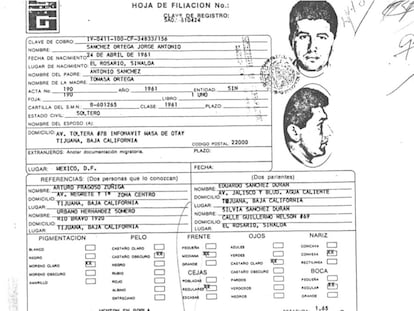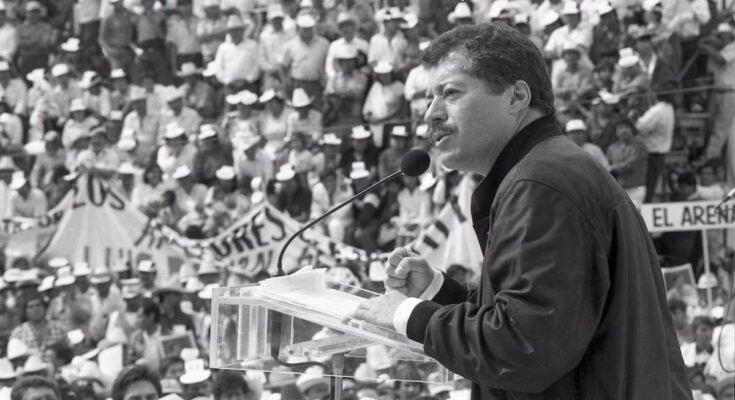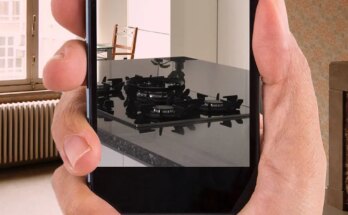Colosio again, the second murderer again and, once again, a tangle of files and judicial resolutions that is updated in the midst of the crisis. The arrest of Jorge Antonio Sánchez Ortega, a former secret service agent, once again reveals one of the most discussed mysteries in Mexican politics: the murder of the PRI presidential candidate, Luis Donaldo Colosio Murrieta.
The arrest took place on Saturday 8 November in Tijuana, the place where Colosio was murdered on 23 March 1994, and came just as the government is in a crisis of credibility due to the murder of the mayor of Uruapan, Carlos Manzo. Added to the suspicions about the political use of the case, launched by the PRI, is the opacity of the Attorney General of the Republic who, a week after the arrest was reported, has not yet released official information on the incident. A week after the new arrest of Sánchez Ortega, judge Daniel Marcelino Niño Jiménez yesterday issued the formal imprisonment order for the crime of qualified homicide, validating evidence that had been rejected for years.
The PRI, the party that collapsed after the Colosio murder, accuses the government of reviving the case to bring attention to the past. “Another distraction from the terrorist and communist narco-dictatorship! MORENA presents the Colosio case again as a Chinese box to cover the mess in which they have plunged the country. So miserable that they use the memory of an exceptional PRI member to cover their ineptitude”, reacted the national leader of the PRI, Alejandro Moreno, immediately after the arrest.
It is not the first time, in the times of the 4Ts, that the Prosecutor’s Office led by Alejandro Gertz Manero has raised the hypothesis of the second murderer of Lomas Taurinas. On January 29, 2024, he accused the Fifth District Judge of Federal Criminal Cases, Jesús Alberto Chávez, of denying the arrest warrant against the second assassin, to cover up the alleged plot.
“The judge acted with evident bias and violating the imperative principles of evaluation and analysis of the large body of evidence presented by the FGR, which implicates Jorge Antonio S., a CISEN agent in charge of covering up the presidential candidate, and who was released at that time in a clear criminal cover-up, in which Genaro G, who was deputy director of operations of CISEN himself and who saved him in Tijuana, was directly connected”, said the Public Prosecutor’s Office, which at the hearing the same day he announced that he will appeal the judicial decision before a collegiate court.
The next day, President Andrés Manuel López Obrador read the FGR statement in its entirety in the morning conference, and dedicated almost an hour to commenting on Colosio’s murder, the arrest and subsequent release of the second assassin, and the famous conspiracy theory, which since those years has been opposed to the official version of the lone assassin, Mario Aburto. The case served López Obrador to bring together two of his favorite villains in a single plot: former president Carlos Salinas de Gortari and Genaro García Luna, Felipe Calderón’s security secretary, imprisoned in the United States for his ties to the Sinaloa cartel.
“If it is a lone shooter, it is a personal motivation, but if another person intervenes, and even a state institution, there is already a different connotation”, the president hypothesized, “we must add that, for this character, according to the investigation by the Prosecutor’s Office, the person who will save him is none other than Genaro García Luna, who worked at CISEN…”.
That very day, journalist Tim Golden published ProPública an investigation – based on anonymous sources – which stated that the US Drug Enforcement Agency had investigated alleged drug trafficking contributions to López Obrador’s presidential campaign in 2006, a version which the president had vehemently denied in early 2024.
Today, six months after a judge denied the arrest warrant to the FGR, Sánchez Ortega’s name returns to public opinion, without the same spotlight that López Obrador had given him in January 2024, but with an arrest in between. So far neither the Prosecutor’s Office nor President Claudia Sheinbaum have wanted to refer to the issue, but the PRI assure that it is a strategy to divert attention from the media crisis triggered by the Carlos Manzo case.
“It is a very useful way for the 4T government to evade its current responsibilities: to constantly refer to the past to justify its inabilities, its inaction, its current vices,” says Dulce María Sauri, president of the PRI from January 1999 to March 2002.
Sauri was governor of Yucatán and federal deputy before leading the PRI, and recalls how the Colosio case traumatized her party and the government of Ernesto Zedillo (1994-2000), who addressed the issue with four special prosecutors: Miguel Montes, Pablo Chapa, Olga Islas and Luis Raúl González Pérez. The latter, in September 2000, delivered a four-volume report in which he analyzed the theory of the second attacker in depth, but was unable to confirm it.
“At that moment, as a PRI member and as a person, it was enormously difficult for me to accept the fact that a person with Mario Aburto’s profile, just one person, could change the course of a country. It was very difficult for me to accept it. That’s why it was more human to try to find an explanation in a plot, and that’s why now this desire to return to the topic is not surprising; that’s why they resort to it. But let’s see, a question: is it credible that a person who was guilty would have remained living in “Tijuana”? Questions Sauri.
Who is Sanchez Ortega?
More than 31 years have passed since that afternoon of Wednesday 23 March, in Lomas Taurinas, when the agent of the National Intelligence Center for Security (CISEN), Jorge Antonio Sánchez Ortega, was stopped near the crime scene with his jacket stained with blood – presumably from the wounded candidate – and residues of lead and barium on his hands.
Three decades since his arrest and subsequent release, which occurred in completely anomalous circumstances: he was released in a few hours, without a professional and serious interrogation (the dossier says that only five questions were asked) and despite having tested positive for the Harrison test, which reveals who has just fired a firearm.
In the report of the Special Deputy Prosecutor of the Colosio case, presented in the last days of Ernesto Zedillo’s six-year term, there is a chapter on the evidence that could have been altered or destroyed and on the insufficiencies and omissions after six years of investigations, which reads verbatim: “The atomic absorption test was not performed on Jorge Antonio Sánchez Ortega, to confirm that he had fired a firearm, given that he had stated that he had not had been shooting for two years. The ministerial certification of blood stains on the jackets of Sánchez Ortega and Mayor Valenzuela was also omitted, just as the release of the two was hastily decreed.”

However, the document concludes that these doubts cannot be considered clues to confirm the existence of a second murderer, nor that the alleged attacker was Sánchez Ortega, who stated that he was 200 meters from Colosio when the shots occurred and that his jacket was stained with blood accidentally, while the wounded candidate was transferred from an ambulance to a truck to be able to take him out of Lomas Taurinas, where the crowd obstructed the passage of vehicles.
The former CISEN agent told it like this, in his hasty ministerial statement: “This change of vehicles took place about 300 meters from the place where he had received the shots… Said transfer movement ended up by chance in the same direction in which I was, so when I saw that help was needed… moving Mr. Colosio’s body, I voluntarily intervened in this action, with the result that my clothes became soaked and stained on my left arm, not” I realized it at that moment because of the participation I had made. Once he got into the ambulance, he left for the place where Mr. Colosio would be treated for his injuries.”
In volume III of the report, entitled Possible accomplices and accomplicesthere is a chapter dedicated to Jorge Antonio Sánchez Ortega in which it is concluded that “there are no clues linking him to the crime” and that his presence in Lomas Taurinas was due to the order of his superiors to cover the PRI candidate’s rally unarmed and to make a report, “without evidence that he had been sent for any other purpose”.
When this report was made public (September 2000), Sánchez Ortega was free and, as the magazine documented years later Processafter Colosio’s murder he continued to work for CISEN. He was assigned to Sinaloa, then to administrative duties in his native Baja California, and finally to Coahuila.
It subsequently went unnoticed for almost two decades, until the FGR decided to reopen the file and request its connection to the trial.



